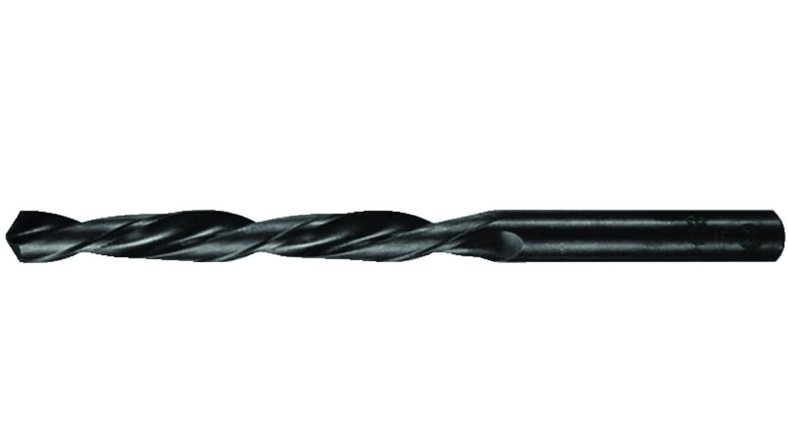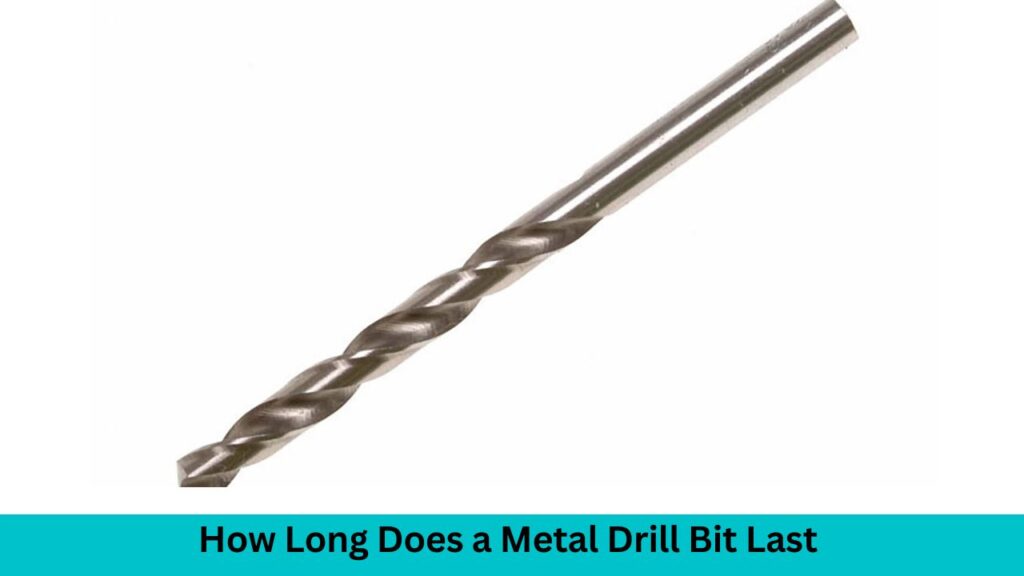If you’ve ever needed to drill into metal, you know having a quality drill bit is essential for the job. But how often do you really need to replace your metal drill bits? What factors impact their lifespan? This article will cover everything you need to know about how long metal drill bits last.
In the world of construction, fabrication, and countless do-it-yourself projects, the humble metal drill bit serves as an unsung hero, navigating its way through various materials with precision and power.
This blog post starts with a detailed exploration to demystify the factors influencing the lifespan of metal drill bits. From the choice of materials, such as the ubiquitous High-Speed Steel (HSS) or the specialized attributes of cobalt, carbide, and titanium, to external variables like drilling frequency, speed, and material hardness every facet is dissected to unravel the secrets behind a drill bit’s durability.
Beyond the initial selection, the maintenance practices adopted play a pivotal role in determining the longevity of these tools. Regular cleaning, strategic lubrication, and conscientious storage are the pillars of effective maintenance, offering users the key to extending the life of their metal drill bits.
Recognizing the signs of wear and understanding when a drill bit is reaching the end of its operational life is another crucial aspect addressed in this exploration. Dull cutting edges, chipping, and reduced cutting efficiency serve as indicators that prompt users to take proactive measures, be it replacement or resharpening, to ensure continued precision in drilling tasks.
As we embark on this journey, our goal is to equip users—whether professionals, hobbyists, or DIY enthusiasts—with the knowledge needed to make informed decisions about their metal drill bits. This comprehensive guide aims to serve as a valuable resource, shedding light on the intricacies of material selection, external influences, maintenance practices, and the telltale signs of wear. Join us in unraveling the mysteries surrounding the lifespan of metal drill bits, empowering you to get the most out of these essential tools in your toolkit.
- Materials Matter: Understanding Drill Bit Composition
Metal drill bits are crafted from different materials, each with its unique characteristics. High-speed steel (HSS), cobalt, carbide, and titanium are common choices. HSS offers versatility, cobalt excels in high-temperature applications, carbide boasts exceptional hardness, and titanium provides corrosion resistance. Delving into these materials helps users make informed choices based on their specific drilling needs.
- Factors Influencing Drill Bit Longevity
Several external factors contribute to the wear and tear of metal drill bits. The frequency and speed of drilling, the hardness of the material being drilled, and the use of proper lubrication all play crucial roles. Understanding these factors empowers users to implement preventive measures, extending the lifespan of their drill bits.
- Maintenance Practices to Prolong Lifespan
Proper maintenance is key to maximizing a metal drill bit’s lifespan. Regular cleaning, lubrication, and appropriate storage conditions are essential practices. This section offers detailed insights into effective maintenance routines that can significantly contribute to the longevity of drill bits.
- Recognizing Signs of Wear and Tear
Being able to identify the signs of wear and tear is vital for timely replacements. Dull cutting edges, chipping, and reduced cutting efficiency are common indicators. Recognizing these signs allows users to address issues promptly and prevent further damage.
- Resharpening Techniques for Extended Use
Learning the art of resharpening metal drill bits can be a game-changer. This section provides step-by-step guidance on resharpening techniques for different types of bits, offering a cost-effective solution to extend their lifespan.
- Brand Quality and Its Impact
The quality of a drill bit is often synonymous with its lifespan. Investing in reputable brands known for producing high-quality bits can result in longer-lasting tools. This section compares and contrasts various brands, helping users make informed purchasing decisions.
- Insights from Industry Professionals
Finding how professionals in different industries handle and maintain their metal drill bits provides invaluable insights. Real-world experiences and recommendations from experts offer practical advice for users looking to enhance the longevity of their drill bits.
What Impacts Drill Bit Longevity?

Not all drill bits are created equal, and many factors contribute to their overall lifespan. Harder metals, such as steel and iron, will wear down drill bits much faster than softer metals like aluminum. The quality of the drill bit material also plays a major role. Cobalt or titanium-coated drill bits, for example, can last 3-4 times longer than standard high-speed steel bits.
Aside from the metal you’re drilling, several other factors impact longevity:
- Feed Rate – Applying too much pressure when drilling can cause excess heat and wear. Ease up on the pressure.
- Speed – Drilling at the proper RPMs is key. Too fast and bits overheat. Too slow and bits wear unevenly. Refer to the package or manufacturer’s website for recommended speeds.
- Cooling & Lubrication – Using oil or other lubricants keeps bits cooler and cleaner, prolonging their usable life.
- Maintenance – Allowing the buildup of metal shavings will accelerate wear. Regularly cleaning bits helps them last longer.
How Many Holes Can I Expect From My Bits?
It depends. Carpenter drill bits, when used correctly in mild steel, can drill 400-600 holes or more. Standard cobalt bits will typically last through 50-100 holes in hardened steel. As noted above, variables like feed rate, speed, and lubrication all factor in.
As a very rough guideline, here are some expectations based on drill bit type and metal hardness:
- High-Speed Steel: 20-50 holes in hardened steel
- Cobalt Steel: 50-100 holes in hardened steel
- Carbide-Tipped: 100-300 holes in hardened steel
- Titanium-Coated: 300-500 holes in hardened steel
These numbers assume proper use in terms of speed, feed rate and lubrication. Excessive pressure or speeds will dramatically reduce lifespan. Note that harder metals like stainless steel will result in failure on the lower ends of these ranges.
When is it Time to Replace My Metal Drill Bit?
With routine use, the cutting edges along the tip of your drill bit will naturally wear down over time. How can you tell when it’s time to swap in a fresh bit? Here are key signs of a worn metal drill bit:
- Increased Cutting Time – You find yourself pushing down extra hard and spending far more time drilling each hole. If simple holes start taking 2-3 times longer than when the bit was fresh, it could be quite dull.
- Rougher Holes – The walls and edges of your holes come out rough and uneven. A sharp bit will leave a clean, precise hole.
- Overheating – This is a major red flag. Excess heat while drilling can indicate the bit is extremely dull. The metal changing color around the hole is an telltale overheating sign.
- Wandering Holes – Worn bits can “walk” or wander away from intended locations, leaving angled holes.
- Loud Squeaking – Odd noises while drilling signal the last legs of your once-trusted bit.
- Increased Vibration – If your drill starts shaking excessively during use, the wobbly bit is likely quite dull.
If you notice any combination of these signs, it’s best to replace that worn drill bit ASAP. Using a dull bit any longer will likely compromise quality and safety. Investing in fresh, sharp drill bits leads to faster, higher-quality holes.
Extending Your Drill Bit Lifespan
Want to make your high-performance drill bits last? Here are 5 tips:
- Use cutting fluid or oil while drilling metal, especially with harder alloys. This lubricates the bit and controls heat.
- Avoid applying excess pressure. Let the tool do the work.
- Follow the manufacturer’s speed recommendations. Faster isn’t better.
- Maintain sharpness with a dressing stone. Carefully hone down any burrs that develop over time.
- Frequently clear away metal shavings that collect around the bit. Built-up debris accelerates wear.
Properly cared-for carbide or cobalt bits can deliver hundreds of holes in metal. Don’t toss bits at the first sign of wear – a simple sharpening or cleaning may extend their life. But do replace any drill bit that clearly underperforms or drills inconsistently. Saving that last worn bit once it’s dull risks damaging your workpiece or tools.
Conclusion:
In conclusion, the lifespan of a metal drill bit is influenced by a combination of materials, maintenance practices, and external factors. Armed with a deeper understanding of these factors, users can make informed choices, implement effective maintenance routines, and maximize the lifespan of their metal drill bits, ensuring reliable and efficient performance over the long haul.
